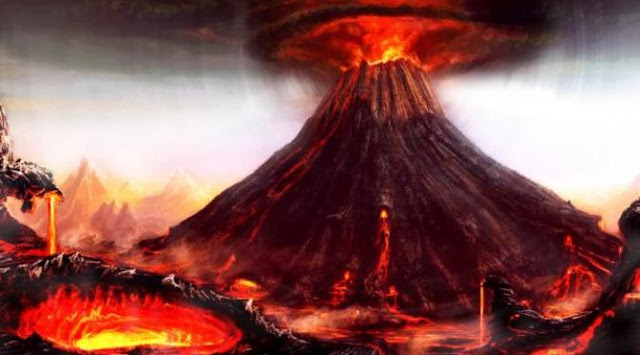The World's Largest Volcanic Eruption
The world's largest volcanic eruption - On ten Apr 1815, Tambora created the biggest eruption famous on the world throughout the past ten,000 years. The volcano erupted over fifty cubical kilometers of rock and folded afterward to make a half-dozen kilometer wide and 1250 m deep volcanic crater. The eruption created international environmental condition effects and killed over one hundred,000 people, directly and indirectly. Minor volcanic rock domes and flows are extruded on the volcanic crater floor at Tambora throughout the nineteenth and twentieth centuries.
Background:
The massive Tambora stratovolcano forms the complete 60-km-wide Sanggar dry land on northern Sumbawa Island. The volcano originally grew to concerning 4000 m elevation before a significant explosion destroyed its summit and left a pre-1815 volcanic crater over forty three,000 years past. volcanic rock flows had for the most part crammed the first volcanic crater by concerning ten,000 years past, before its activity modified to dominantly explosive eruptions, culminating within the 1815 eruption.
The eruption in 1815 empty concerning 50-150 cubical kilometer of rock and measures seven on the VEI scale. It created a large eruption column, that is calculable to own reached a lot of 40-50 kilometer altitude, ejecting giant amounts of ash and aerosols into the layer.
Pyroclastic flows reached the ocean on all sides of the dry land, and serious tephra fall desolate croplands, inflicting Associate in Nursing calculable sixty,000 fatalities. Entire villages were buried underneath thick pumice stone deposits. a number of the settlements have recently been brought back to light-weight by archeological excavations, creating the location a "Pompeii of Indonesia". giant tsunamis with wave heights of ten or a lot of meters might need occurred.
While the toll of individuals living on Sumbawa and close coastal areas was high enough, even a lot of fatalities will be attributed to the indirect impact of world climate deterioration when the eruption. These changes turned 1816 into the "year while not a summer" for abundant of Europe, inflicting widespread famine. it's calculable that it caused the death of over one hundred,000 people.
The reason for the environmental condition changes was inflated absorption of daylight thanks to a veil of aerosols (consisting principally of little droplets of H2SO3 acid, fashioned by SO2 release) that were spread around each hemispheres by stratospheric currents from the tall eruption column. international temperatures born by the maximum amount as three deg C in 1816 and recovered throughout the subsequent years.
It is conjointly believed that the eruption created tsunamis with waves presumably as high as ten meters.




Comments
Post a Comment